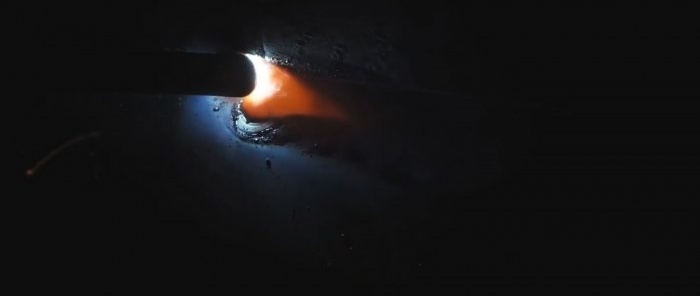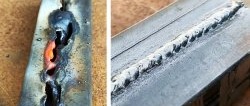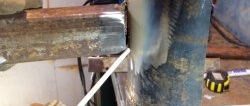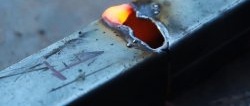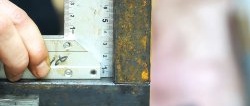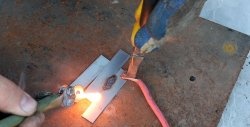Sometimes in the home or at work there is a need to weld a thin-walled profile pipe to a thick sheet of metal, for example, to a mortgage when erecting a fence, fencing a front garden and for other purposes.
In this case, the techniques used both when welding two thin-walled parts and two thick-walled ones are not suitable. Errors are mainly related to the set welding current value and the movement of the electrode during the welding process.
Will need
- thin-walled profile pipe;
- thick sheet metal (mortgage);
- welding machine;
- electrodes with rutile-cellulose coating with a diameter of up to 3 mm;
- hammer for beating slag;
- metal brush.
Welding electrodes for general purposes on AliExpress at a discount - http://alii.pub/606j2h
The process of welding a thin-walled profile pipe to a thick metal (embedded)
One of the main mistakes when welding thin metal with thick metal is the transverse oscillatory movements of the electrode after ignition of the electric arc, symmetrical relative to the longitudinal welding line.As a result, thick metal does not suffer, but thin metal overheats and burns out.
Another error is associated with setting a low welding current in the range of 60-70 A, which leads to non-fusion of the metal despite the fact that the electrode movements were the same as in the first case. There is a simple lack of energy in the welding arc.
Since the second part is quite thick, it is necessary to weld at a higher current and move the electrode so that the main part of the energy of the welding arc is absorbed by the thick metal, then the thin metal will not overheat, will remain intact and the weld will be of high quality.
But if, with a high welding current, for example, 100 A, you make transverse movements with the electrode from thick metal to thin metal, then again there is a high probability of burning through the thin metal and holes will appear instead of a solid weld.
In order to qualitatively weld thin metal to thick metal, we reduce the welding current to 90 A, and after igniting the electric arc, we move the electrode along the welding line along the thick metal and only lightly touch the thin metal. Any oscillatory movements are excluded.
In this case, due to the absence of transverse oscillatory movements at the end of the electrode, sufficient energy of the electric arc is transferred to a greater extent to the thick metal and the thin metal does not burn through, but fully participates in the formation of a continuous and durable weld.


